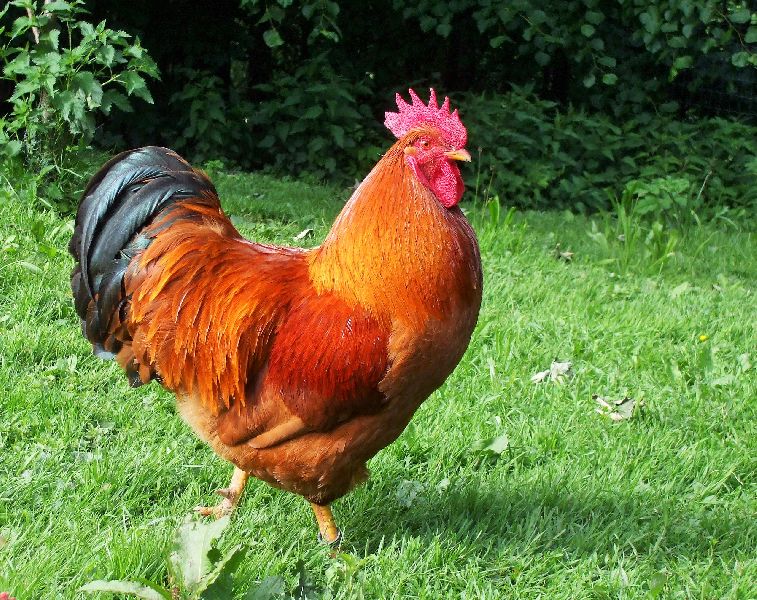Scientists in India have recovered an ancient breed of local dual-purpose chicken called the Giriraja chicken. Centuries ago, poultry must have seemed like a wonderful animal to tame. They produced a considerable quantity of eggs and were good producers of meat.
However, in recent decades modern chickens have emerged that are almost unrecognizable from their ancestors: raised exclusively as table birds and fast-growing.
But Indian scientists believe that the time has come to change this trend and have developed a new variety that will produce both eggs and meat.
The Giriraja is a breed of chicken developed by the Karnataka Veterinary and the University of Animal and Fishery Sciences in Bangalore, India. This breed is also called Bonda Chicken (Bonda is a round snack fried in oil, made from Besan flour).

Giriraja Chicken Characteristics
Giriraja hens lay around 130 to 150 eggs per year weighing 52–55 grams each. The eggs have good hatchability (80–85 percent), and allow farmers to increase their own herd. Their shells are brown in color and thicker than those of other commercial eggs. The birds exhibit better growth compared to local varieties and are suitable for mixed farming and home rearing.
Appearance and Characteristics of the Giriraja Chicken
For backyard rearing, a flock of five hens and one rooster is an ideal rearing number. No special care is required to keep this hardy breed. If raised in the open field they are able to survive by searching for their own food. Being good scavengers, they feed on a variety of insects and plants.
These magnificent birds are resistant to many diseases, one exception being Ranikhet disease.
Giriraja Chicken History
Small farm farmers cannot compete with corporate-owned factory farms. The vast economies of scale on which they operate, often herding tens of thousands of birds into a single shed, have driven small farmers out of the Indian poultry market.
However, there is a solution. Scientists at Bangalore University developed the Giriraja chicken, also known locally as the “King of the Mountain”. This hardy bird provides nutrition and income to the local population without the need for a continuous and expensive supply of drugs.
Joyce D’Silva, ambassador for the Compassion in World Farming charity, said the new brown-feathered adult Giriraja hens at first glance reach the size of the world’s more than 50,000 intensively grown birds, but the difference becomes noticeable. seeing them move from one side to another.
“The average Industrial chicken walks in a very unpleasant way, they move from side to side when they walk; on the other hand, the Giriraja hen seems much more agile and healthy”, affirmed D’Silva.
Giriraja is a breathing microfinance initiative that is bringing livelihoods back to those left behind in India’s booming poultry economy.
Sniffing out this huge success story, corporate-owned poultry companies have already tried to buy this university-established non-profit initiative, but to no avail. For now, the Giriraja is helping communities lift themselves out of poverty and is a success story of sustainable agriculture that leads the way for the rest of India and the world to follow.
See Also:
-
- Gramapriya Chicken Breed: History, Origin, and Characteristics
- Kadaknath Chicken Breed: History, Origin, and Characteristics
- Vanaraja Chicken Breed: History, Origin, and Characteristics
- Ayam Cemani Chicken Breed: History, Origin, and Characteristics
- Ayam Bekisar Chicken Breed: History, Origin, and Characteristics